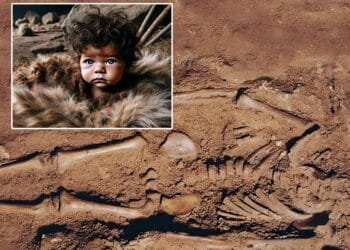A research team from the Center de Recherche et de Restauration des Musées de France has uncovered charcoal-based Paleolithic cave art in the Font-de-Gaume cave, located in the Dordogne region of southern France.

Published in Scientific Reports under the title “First Discovery of Charcoal-Based Prehistoric Cave Art in Dordogne,” the team’s findings provide a key breakthrough in dating techniques.
The Dordogne region, renowned for its 200 caves adorned with Paleolithic art, has posed a significant challenge for archaeologists attempting to determine the age of these ancient masterpieces. Traditionally associated with the Magdalenian Period, dating between 12,000 and 17,000 years ago, the art’s coloration with iron- or manganese-oxide-based material has hindered accurate radiocarbon dating.
However, in late February 2020, the research team made an extraordinary breakthrough by discovering charcoal-based drawings in Font-de-Gaume’s main galleries, colloquially known as “Bison Cave.”

Named for its 80 depictions of bison, alongside images of deer, horses, mammoths, and more, the cave has become a UNESCO World Heritage site, making sampling by authorities extremely rare.
Facing restrictions on sampling, the researchers turned to non-invasive analytical methods, employing visible-light and infrared photography, superimposition of images, portable X-ray fluorescence (pXRF), and portable micro-Raman spectroscopy. By using these methods, the team successfully revealed carbon-based drawings beneath those created with iron and manganese oxide pigments.
The team’s creation of false-color infrared photography (FCIR) images through superimposing visible-light and infrared images proved pivotal. This innovative technique, capturing radiation wavelengths above 900 nm, allowed the differentiation of various materials used in the creation of the images.
Portable micro-Raman spectroscopy played a crucial role in detecting carbon-based compounds within the images. Meanwhile, pXRF enabled the differentiation of various manganese-oxide compounds present in the black figures. The different types of pigment materials discovered may represent distinct creation phases.
The findings at Font-de-Gaume mark a turning point in the field of archaeology, offering the potential for more precise radiocarbon dating. The discovery of carbon-based cave art opens up new possibilities, allowing scientists to analyze organic carbon for more accurate dating.




























